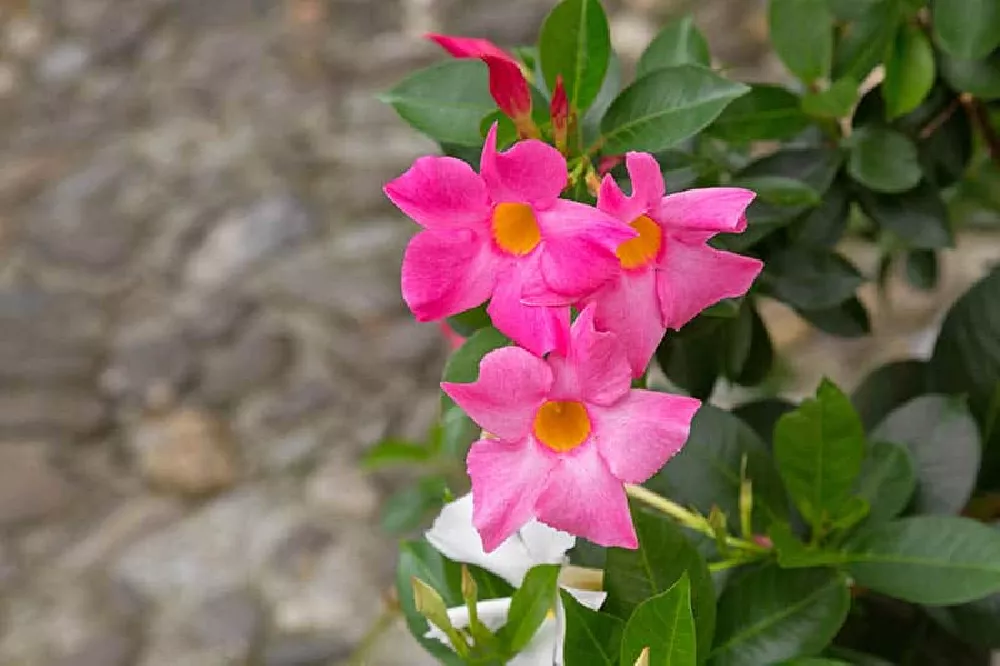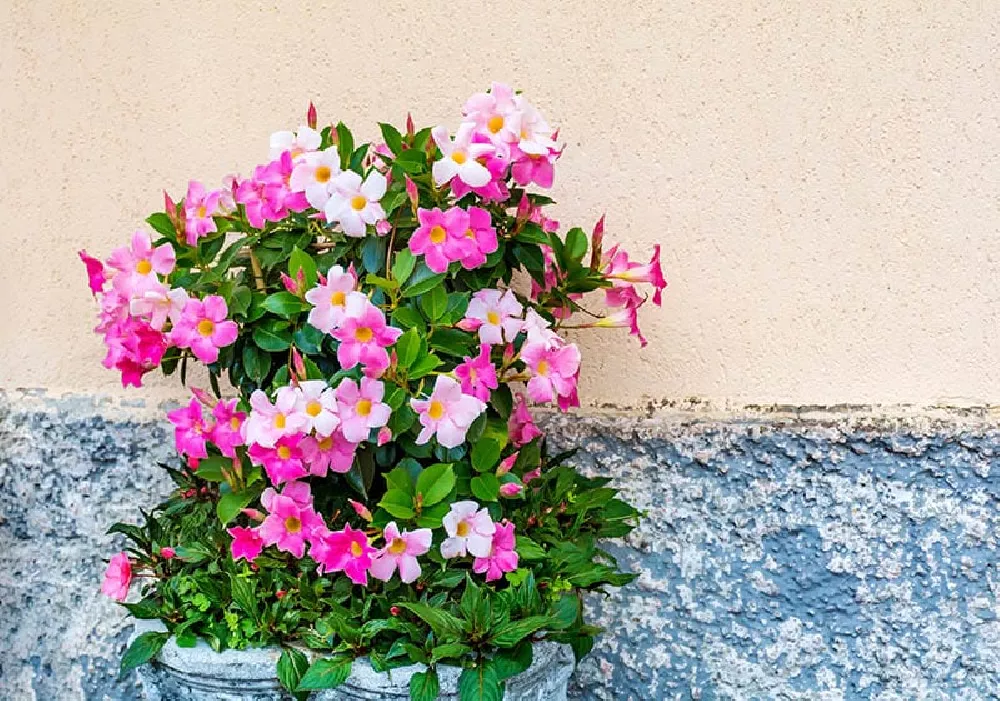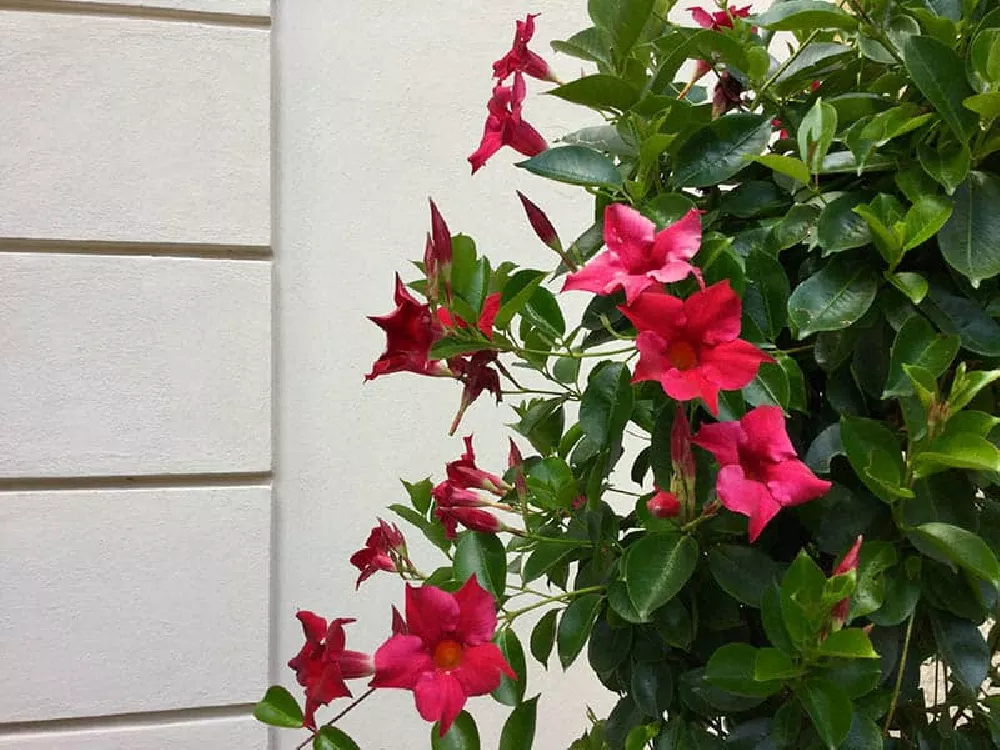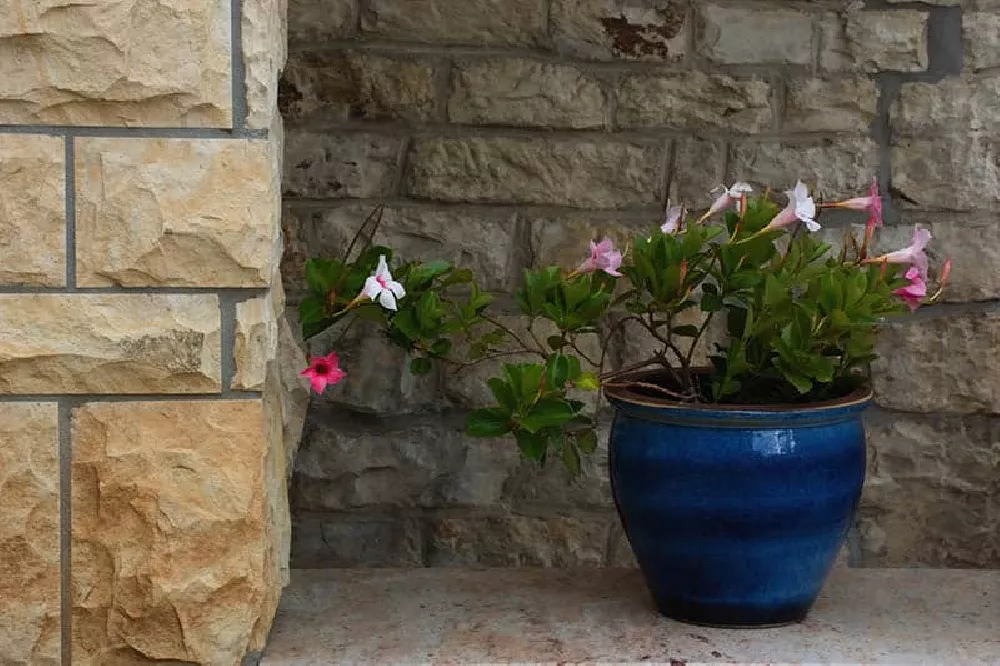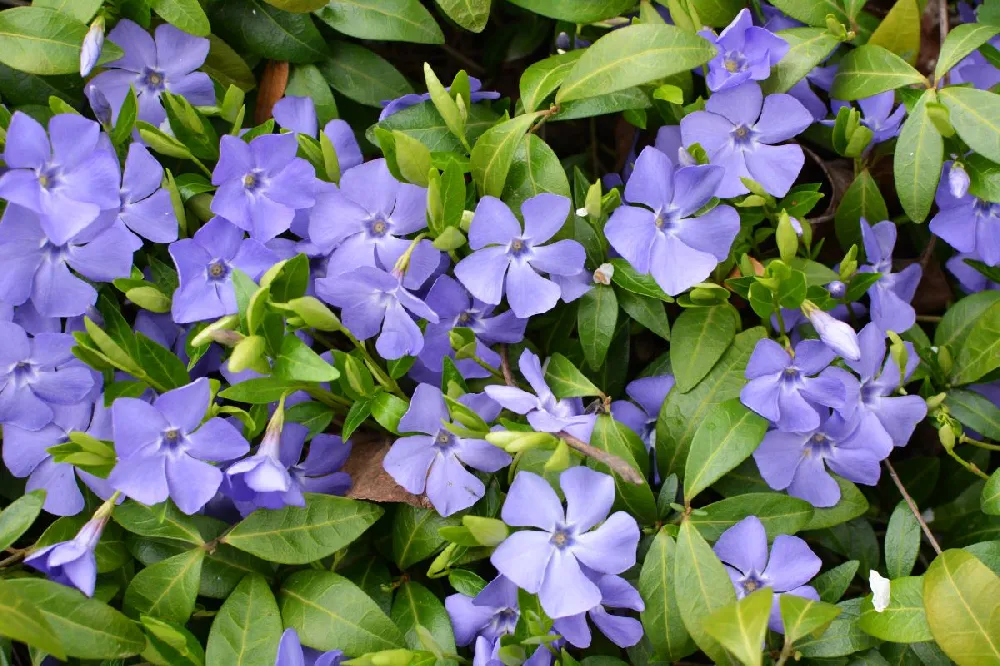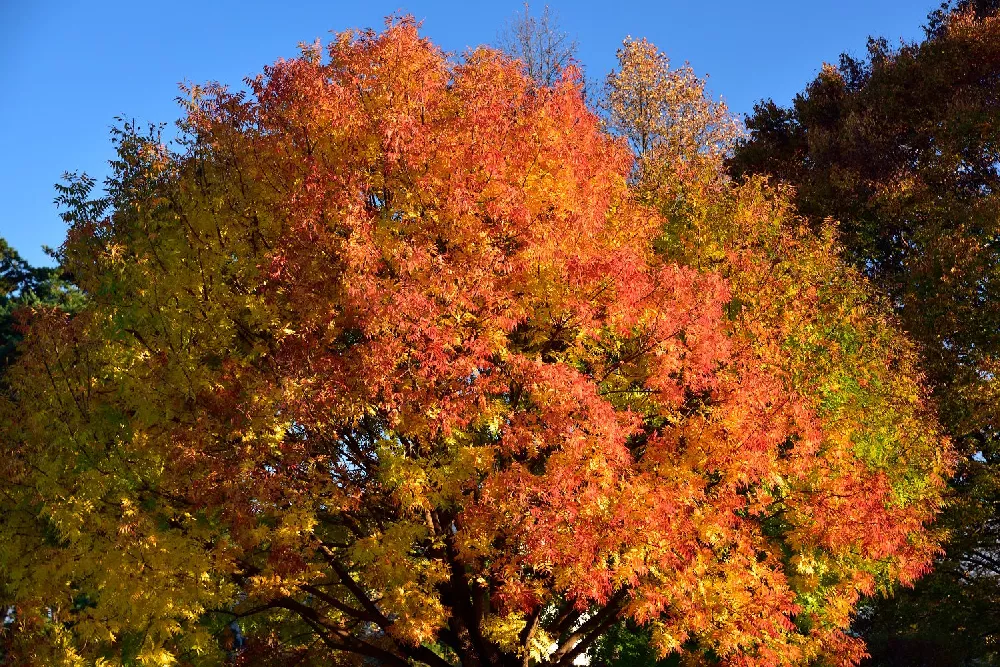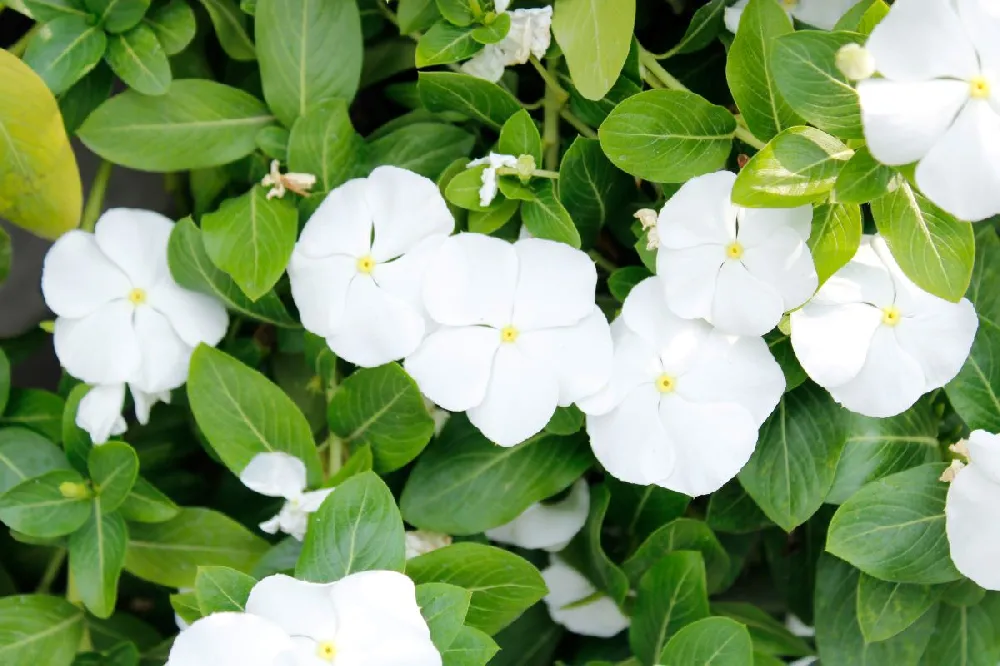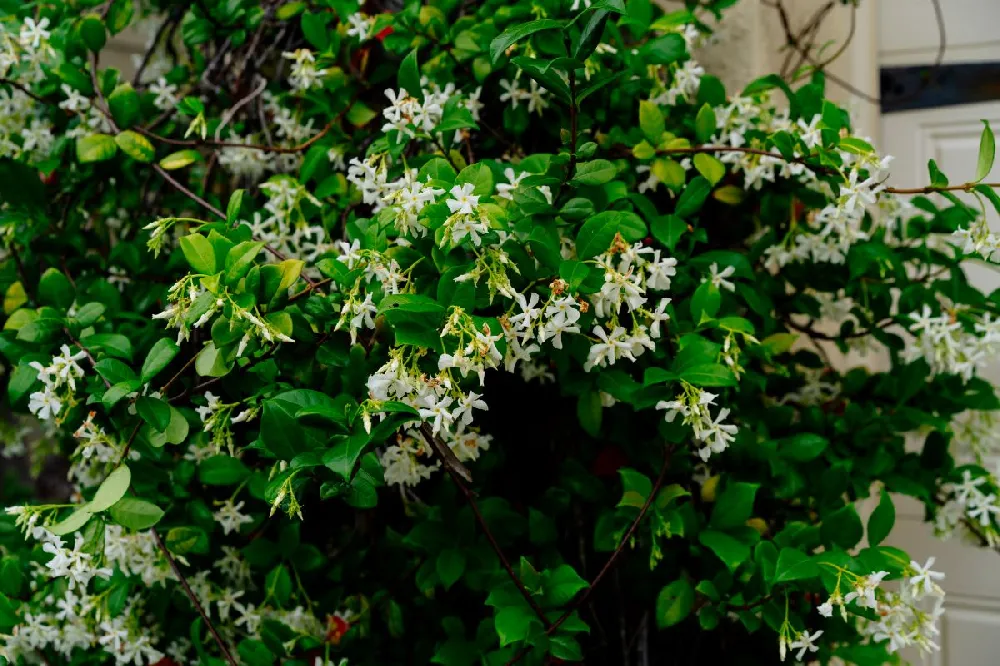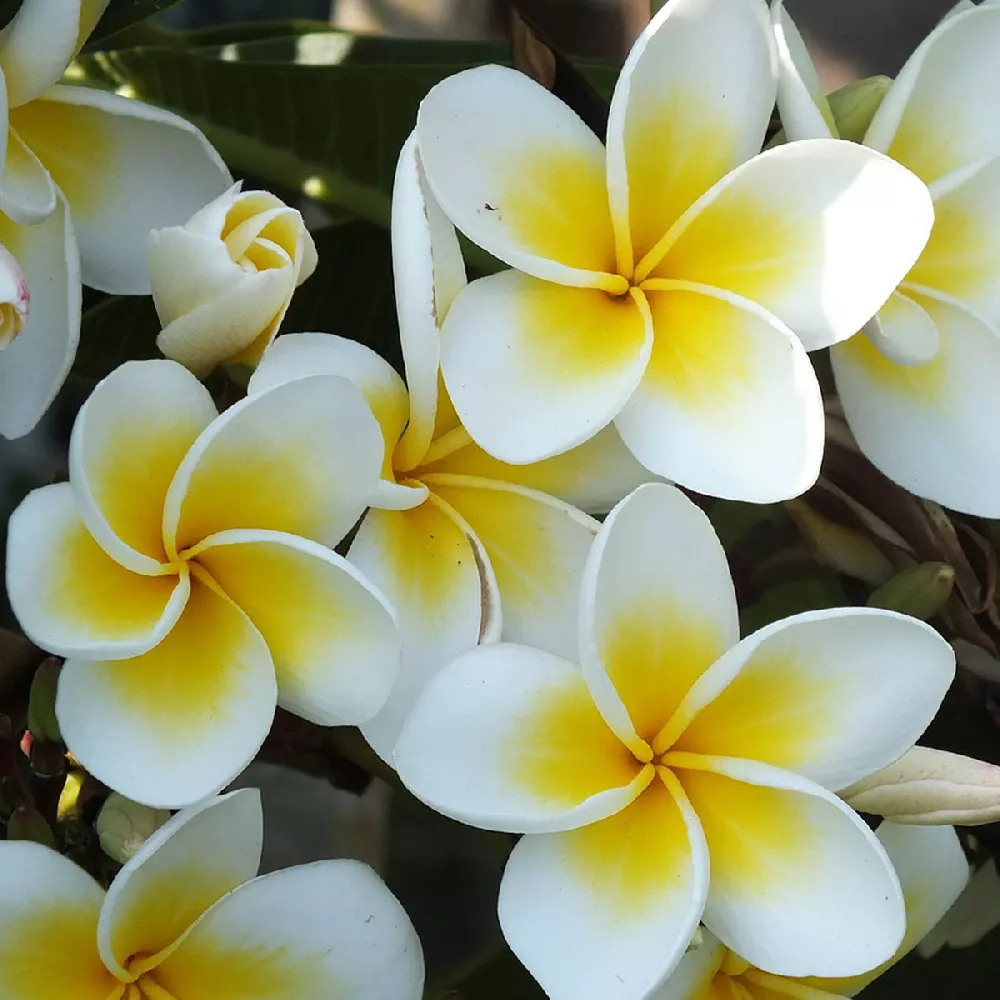- Home >
- Ornamental Plants >
- Mandevilla Vines
Mandevilla Vines for Sale - Buying & Growing Guide
Grow Joy - 2.5-Inch Pot - Alice Dupont Mandevilla Plant
Grow Joy - 2.5-Inch Pot - Sun Parasol® Pretty Crimson Mandevilla Plant
Grow Joy - 2.5-Inch Pot - Sun Parasol® Pretty Pink Mandevilla Plant
Enter your zip code to find nearby stores that may carry this plant.
Although bougainvillea gets all the attention as the premier semi-tropical flowering vine, Mandevilla easily gives it a run for its money. An increasingly common patio plant in southern yards, mandevilla has flowers that are equally impressive, adding an elegant touch to a trellis or other support.
How to Grow Mandevilla Vines
How to plant mandevilla vines
Mandevilla vines are tropical plants native to warm climates like South America, so do not plant them until all chance of frost is past and night temperatures are above 50 degrees Fahrenheit. Choose a sunny location (six to eight hours a day of direct sunlight), and soil that has lots of organic material in it. Loamy soil is best, but mandevilla can also thrive in sandy soil that’s been amended with organics.
You’ll want to plant your mandevilla vine in front of a post, arbor, trellis, or even a mailbox, since it will need a support to twine onto. Dig a hole twice as wide as the root ball and just as deep. Tease out the roots so they’re not encircling the rootball, and spread them out when you place the plant in the hole.
Backfill (replace the dirt you removed) with compost-enriched soil and tamp it down firmly. Water the ground well around the plant, and mulch the area lightly with an organic material such as leaf mold or compost.
How to achieve maximum results
If you live in USDA hardiness zones 9–11, you can grow mandevilla vines outside. If you’re north of those zones (which includes most of the U.S.), you can still enjoy mandevilla’s gorgeous blooms by growing the vine in a pot that you bring inside for the winter. Potted plants need more water and nutrients than plants in the soil, so monitor your vine carefully and fertilize it every few weeks with a light dose of general use balanced fertilizer.
How to Care for Mandevilla Vines
Mandevilla vines like to have their soil kept moist, so water your plant at least once a week, aiming for about one inch of water at a time. During the winter you can cut back on watering. If you’re growing your mandevilla in a pot, you may need to water it every day if the weather is hot, but make sure that the pot allows excess water to drain out.
Feed your mandevilla vine with a balanced fertilizer every few weeks during the growing season. Dilute the food so that the plant is getting a light application each time, or use a time-release fertilizer. If you want to increase blooming, choose a fertilizer that contains a higher amount of phosphorus (this is the middle number in the formula, such as 10-15-10).
Pollination
Mandevilla flowers are loaded with pollen, and they are a favorite with hummingbirds, butterflies, and bees, who do the heavy lifting of pollinating these vines and helping them set seed pods. Mandevilla is also easily reproduced through cuttings, which should be taken in the spring and planted in a sandy soil mix.
Pruning
If you’re growing your mandevilla vine in a pot that you’ll bring indoors in the winter, prune back your plant in early fall to a ten inch stem, then store it in a sheltered spot where the temperatures won’t drop below 55 degrees Fahrenheit. In the spring, you can trim the ends off your soil-grown mandevillas to encourage bushy growth and to keep the vine manageable.
Pests and diseases
Insects that are attracted to mandevilla vines include spider mites, scale, white flies, and mealybugs. Control these pests by cutting off infected stems or leaves, or clean your plant with a strong spray of water, insecticidal soap, or neem oil.
Mandevilla vines are prone to botrytis blight, which is also called gray mold, and may cause the leaves to wilt or turn brown. Neem oil can help address this disease. Crown gall is an easily visible swelling on branches or at the base of the plant, which unfortunately can’t be treated. If your plant gets crown gall, it should be destroyed and not composted.
Soil
Whether you choose to house your Mandevilla Vine in a container pot or a hanging basket, the soil you use needs to be carefully considered. Choosing the correct soil for your vine will be one of the most important aspects of caring for your plant. The ideal soil will result in a healthy vine that looks lush and full. Mandevilla Vines like to be in loose, well-draining soil. Select a good potting soil that is compost-based, or a peat moss, and add sand to help improve aeration. You could use two parts potting soil or peat moss to one part builders’ sand, or, alternatively, use all three mediums in equal measure.
Light
Mandevilla plants like a good balance of bright, indirect light and shade. Too much direct sunlight will cause the plant to become scorched, while too much shade will stunt plant growth and inhibit flowers from blooming, so choose the positioning of your plant with this in mind.
The ideal outside spot for your Mandevilla Vine is a location that gets morning sun but is shaded and, thereby, protected from the strong sun in the afternoon. This balance will allow your plant to thrive.
Temperature
This plant enjoys warmth, with temperatures ideally between 60-80° F. If outside temperatures drop any lower than 50° F, then it is time to find a home for your plant indoors. The Mandevilla Vine cannot survive overnight temperatures of 40° F, so be sure you don’t leave it too late and lose your plant. Once inside, normal home temperatures will be fine for the plant. It can return to life outside once temperatures are consistently reaching a minimum of 50° F.
Humidity
The Mandevilla Vine likes moderate to high humidity. When kept inside as a houseplant, it will benefit from a light water misting spray, or the use of an electric humidifier to prevent it from drying out. This plant is also able to absorb moisture through its leaves. If air becomes too dry inside, then the plant can dry out, so be sure to put steps in place to prevent this from happening.
Repotting
The Mandevilla Vine must be potted in a portable container, such as a pot of hanging basket, and not directly into the ground. This is because the plant does not fare well outside over winter and will need to be transported inside to be kept alive. Ordinarily, you will need to repot your vine as soon as you bring it home from where you have purchased it. Be careful when selecting a container for your vine, choosing one with a little extra space around the edges than the current pot it’s in. Using a container that gives the roots too much room to grow means the plant will put all of its efforts into growing roots instead of producing flowers, resulting in poor flower growth. However, you still want to allow the roots a little space to spread, so don’t be too conservative when selecting a pot.
Mandevilla Vines will need to be repotted every year or two, and it’s best to do this in the spring. As fast growers, the roots can become pot-bound quite rapidly. When you notice this happening, repot the vine by selecting a new pot that is just an inch or so larger in diameter than the current pot. Pad the edges with fresh soil and transport the plant from its current pot to the new pot, rubbing the roots gently between your fingers to encourage them to spread in their new home. Try not to use a pot with more depth, as this can negatively impact flower production. Repotting is also a good opportunity to remove any dead flowers or foliage from your plant. This will ensure that the plant’s energy is directed correctly instead of to areas of the plant which are damaged.
Overwintering
Bring your Mandevilla Vine inside once temperatures outside drop to below 50° F. Be sure to check the plant thoroughly for pests before bringing it inside, as these can spread to other houseplants. Common pests on the Mandevilla Vine include mealybugs, aphids, scale, whiteflies, and spider mites. Check under the leaves, as well as on top, on flowers, and stems.
Some people like to have the vine as a houseplant during winter, in which case, ensure it gets bright but indirect light, is kept at usual home temperatures of between 60-80° F, and keep the plant away from cold drafts or excessively dry air. The plant will grow very slowly during this time, and the aim is simply to maintain it rather than developing it, so don’t use any fertilizer once the vine has been moved inside, and dramatically reduce how frequently and how heavily you water it. The Mandevilla Vine can return outside and resume normal care when spring arrives.
Alternatively, you can bring the vine inside to a basement or garage over winter. This will involve putting the plant into a protective environment, which will allow it to become dormant. To do this, prune the plant back to around a foot in height and move the plant into your chosen place once the temperature outside is quite cool. You will need to ensure that your garage or basement temperature stays above 50° F during winter; otherwise, the plant will die. At this point, some people choose to cover their Mandevilla Vine with a plastic bag, though it’s also acceptable to leave the plant uncovered.
Whichever method you choose, you’ll need to ensure the plant is in total darkness during its time inside. The removal of sunlight from the vines life will make it go dormant. You can leave your plant in this state for the duration of winter, checking on it occasionally to see if the soil is dry. If it is, you can water it just a little amount to keep it alive. This process allows the plant to rest completely. In February or March, assess the plant’s condition for disease and damage, removing any parts of the vine that have died. At this point, you can repot the plant if necessary, and resume feeding and watering the plant (Royal Horticultural Society).
Following this, the plant should bounce back to life and perk up considerably. When spring comes around, you will need to gradually re-introduce the plant to light and heat. Put it outside on bright and warm days in April or May, remembering to bring it back inside overnight when temperatures drop. During this time, the plant will gradually acclimatize to life outside. Any winter growth may die during this transition, but this is not a cause for concern and is entirely normal. It will resume its usual rapid growth pattern once it properly settles back into its home outdoors As soon as the weather becomes more consistently warm, with a minimum temperature of 50° F, the plant can return to its position outside on a more permanent basis.
Common Problems
Yellowing leaves
Foliage that is turning yellow is most commonly a result of lack of nutrients, but this could be down to several possible factors. Most commonly, overwatering is to blame for this problem. Too much water will saturate the roots of the Mandevilla Vine and prevent them from being able to absorb water or nutrients. Poor drainage is a very similar problem. If the soil cannot effectively drain, then the roots will be sitting in wet soil and become saturated, leading to an inability to absorb water and nutrients. These issues will eventually lead to root rot, which will kill the plant, so yellow leaves should be addressed early to give your plant a greater chance of survival.
Too little water can also cause yellowing leaves because the water is the vehicle that carries the nutrients to the plant via the roots. If the plant is not getting enough water, then the plant will not be absorbing any food or drink.
Nutrient-deficiency can also be caused by a lack of, or improper use of, fertilizer. You can figure out which nutrients are lacking from your plant by noting the process by which the foliage turns yellow. If younger leaves turn yellow first, this points to the plant being deficient in iron. If the older leaves are affected first, then this is more likely a lack of zinc, nitrogen, or manganese. By determining which nutrient is missing from your Mandevilla Vine, you can select a more appropriate fertilizer to deal with this.
Brown-spotted leaves
Brown spots on the leaves of your plant are ordinarily the result of disease or pests. You can check your plant for pests by inspecting it closely, looking for the bugs themselves, as well as other clues, such as holes in the foliage, webbing, or residue that pests have left behind and develops fungus. Pests can also turn the leaves of your plant yellow as the feed on the sap, depriving the plant of nutrients.
In the case of pests though, yellowing leaves will be accompanied by other symptoms. If you identify pests on your plant, first try to remove them with a strong blast of water from a hose. Repeating this daily for a week is usually enough to rid the plant of a minor infestation. If the pest problem is more severe, try using neem oil.
You can buy neem-based sprays, which are organic and not harmful to the environment or beneficial to insects. Alternatively, you can make your own for a more natural solution. Buy pure organic cold-pressed neem oil; it is fairly inexpensive and can be easily bought online. Neem oil should be diluted before spraying on any plants, but it is not water-soluble. To make your spray, first mix one quart of water with a squirt of mild dish soap (around half a teaspoon); this will allow the neem oil to mix with the water. Add one teaspoon of neem oil and mix. Use the spray liberally on your Mandevilla Vine every day for a week. This should rid your plant of any pest problem, so the use of pesticides is rarely required.
